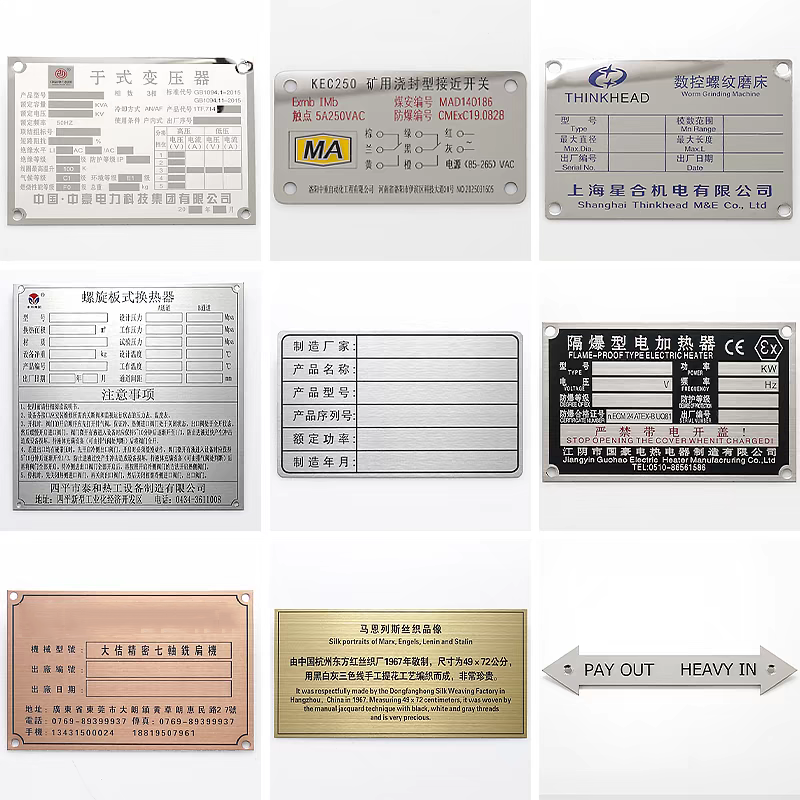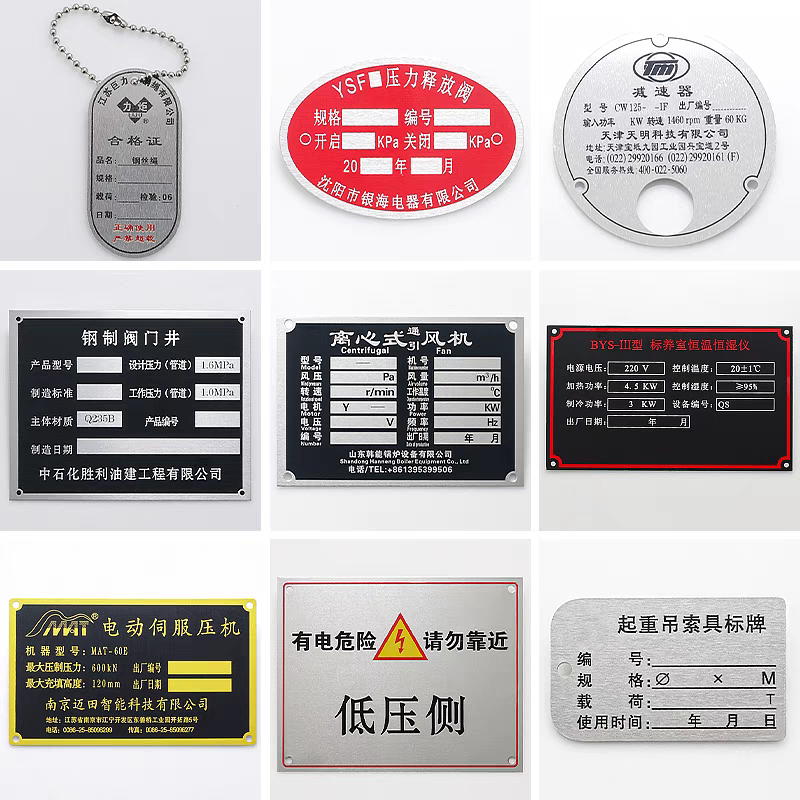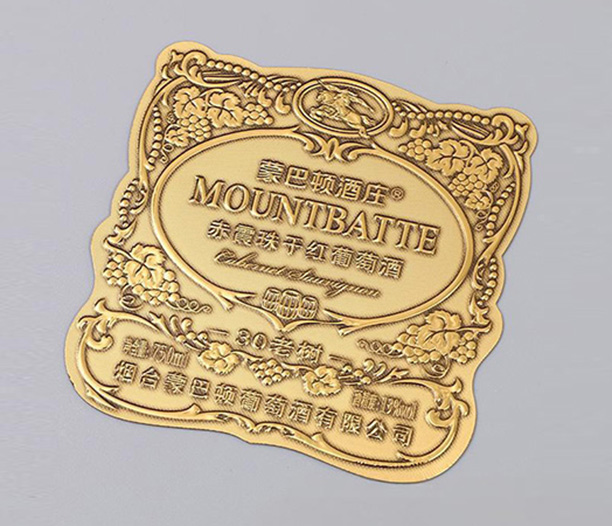In the world of business assets, from high-value IT servers to humble office chairs, knowing what you own, where it is, and its condition is fundamental. This is where property tags for equipment come into play. Far more than simple stickers, these tags are a critical component of asset management, security, and operational efficiency. This article will delve into the essential aspects of property tags for equipment, exploring their various forms, core benefits, and how to choose the right ones for your needs. We will also address the frequent challenges companies face and how to overcome them.

What Exactly Are Property Tags for Equipment?
At their core, property tags for equipment are durable labels affixed to physical assets to provide unique identification and information. Think of them as a nametag and a passport for your company's property, all rolled into one. They typically feature a unique identifier, such as a barcode, QR code, or serial number, which links the physical item to its digital record in an asset management software system.
The primary purpose of these tags is to create an unambiguous link between a physical asset and its database record. This allows for quick and accurate tracking of crucial information, including purchase date, cost, warranty status, maintenance history, assigned user, and location. Without property tags for equipment, managing a large inventory of assets becomes a manual, error-prone, and incredibly time-consuming process.
Key Types of Property Tags and Their Applications
Not all assets are created equal, and neither are their tags. The environment and use case of the equipment dictate the best type of tag. Here are the most common varieties:
Asset Labels (Paper/Polyester): These are standard adhesive labels, often with a printable surface for barcodes and text. They are cost-effective and suitable for indoor equipment in controlled environments, like office furniture, computers, and monitors.
Anodized Aluminum Tags: Known for their exceptional durability and resistance to corrosion, chemicals, and extreme temperatures. These are ideal for heavy machinery, manufacturing equipment, and assets used in harsh industrial or outdoor settings. They are typically etched or stamped with information for permanent legibility.
Tamper-Evoident or Destructible Vinyl Labels: These labels are designed to break apart if someone tries to remove them. This feature is crucial for high-security assets like IT equipment, laptops, and sensitive instruments, as it provides a clear visual sign of tampering or attempted theft.
Metallic Foil Labels: These labels offer a good balance between durability and cost. They resist moisture and mild chemicals, making them suitable for laboratory equipment, medical devices, and tools in workshops.
RFID Tags: These are the high-tech solution. RFID (Radio-Frequency Identification) property tags for equipment contain a small microchip that can be read from a distance without a direct line of sight. This enables rapid inventory checks of hundreds of items simultaneously, perfect for large warehouses or tool cribs.
Why Your Business Needs a Robust Property Tagging System
Implementing a system of property tags for equipment delivers tangible benefits across numerous departments:
Improved Inventory Accuracy: Eliminate guesswork. Know exactly what you own, reducing the risk of purchasing duplicates and enabling accurate financial reporting.
Enhanced Accountability: When an asset is assigned to a specific employee or department, its care and location become their responsibility. This reduces loss and misuse.
Streamlined Audits and Compliance: Physical audits become a simple scan of a barcode instead of a tedious manual count. This is vital for financial audits, insurance purposes, and industry-specific compliance regulations.
Optimized Maintenance Schedules: Linking a tag to maintenance records ensures equipment is serviced on time, reducing downtime, extending asset lifespan, and preventing costly repairs.
Theft Deterrence and Recovery: A visibly tagged asset is a powerful deterrent. Furthermore, a unique ID number makes it difficult for thieves to resell the item and easier for law enforcement to identify and return it if recovered.

Choosing the Right Property Tags for Your Equipment
Selecting the appropriate tag is crucial for long-term success. Consider these factors:
Surface Material: What will the tag be attached to? Metal, plastic, wood, or glass? The surface dictates the required adhesive strength.
Operating Environment: Will the asset be indoors, outdoors, exposed to chemicals, solvents, extreme heat, or abrasive conditions? This determines the material of the tag itself (e.g., aluminum for harsh environments).
Security Needs: Is the asset high-value or prone to theft? A tamper-evident label or a permanently etched metal tag may be necessary.
Required Data Capacity: Do you need to store just an ID number, or would a QR code that links to a full manual and service history be more beneficial? For bulk scanning, RFID is unmatched.
Expected Lifespan: Is this a short-term rental or a capital asset meant to last for a decade? Invest in tag durability that matches the asset's lifespan.
Common Problems and Solutions with Property Tags
Even the best systems can encounter issues. Here are the most frequent problems companies face with property tags for equipment and how to solve them:
Problem: Tags Falling Off or Peeling.
Cause: Using a low-quality adhesive not suited for the surface or environment (e.g., a paper label on a greasy tool).
Solution: Thoroughly clean and dry the surface before application. Choose a specialist adhesive designed for challenging surfaces like polyethylene or textured metal. For permanent attachment, consider mechanical fasteners with metal tags.
Problem: Information Becoming Illegible.
Cause: The printed text, barcode, or QR code wears off due to abrasion, UV exposure, or chemical contact.
Solution: Opt for tags with laser-etched, embossed, or chemically etched information. For printed labels, ensure they have a durable laminate overlay to protect the printed area from direct wear.
Problem: Tampering and Tag Removal.
Cause: Theft or malicious intent by individuals who do not want the asset tracked.
Solution: Implement tamper-evident destructible vinyl labels that shatter upon removal. For metal assets, use permanent etching or metal tags that are riveted or welded on, making removal nearly impossible without destroying the asset itself.
Problem: Difficulty Scanning Barcodes or QR Codes.
Cause: The code is dirty, damaged, or printed with insufficient contrast. For RFID, radio interference or metal surfaces can cause problems.
Solution: Ensure high-contrast printing (e.g., black on white) and protect the code with a clear overlay. For challenging scanning environments, test different types of scanners. For RFID on metal, use specialized metal-mount RFID tags.
Problem: Inconsistent Tagging Process.
Cause: Lack of a clear standard operating procedure (SOP) for which assets get tagged, where the tag is placed, and what information is recorded.
Solution: Create a detailed SOP for your asset tagging process. Define asset criteria, tag placement standards (e.g., always on the front-right side), and data entry protocols to ensure consistency across the organization.
Property tags for equipment are a small investment that yields significant returns in efficiency, security, and financial control. They are the essential bridge between your physical assets and your digital management system. By understanding the different types available, carefully selecting tags based on your specific needs, and proactively addressing common implementation problems, you can build a powerful asset management framework that supports your business's growth and stability for years to come. Don't let your valuable equipment go untracked; a simple tag is the first step toward total asset visibility.






